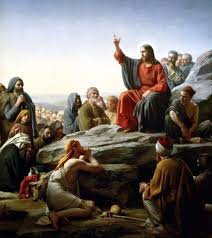
The Great Jewish Christian Divide Revealed
Jesus began His ministry in early 30 A.D. He initially appeared to be just another itinerant rabbi followed by a small group of devotees. While He was noted for His abilities to preach, His sermons had a decidedly down-to-earth translation quality to them. While He was noted for His abilities to heal, this was a gift from God that other rabbis had displayed in the past. While He gave prophecies, there was no way to confirm them until they came to pass. And even though talk immediately started to spread that He may be the long awaited Jewish liberator known as the Messiah, this idea had been said of many past zealot holy men before Him.
The expectation of the Messiah, or Anointed One of God, was thought to be a charismatic man, in the lineage of King David, who would rise to fame. He would then be ordained by the Jewish civil government the Sanhedrin and Temple priesthood as the "Anointed one" sent from God. At the appropriate time, and with the powerful hand of God behind Him, he would organize and lead a rebellion against the enemies of Israel. In this case, the enemy was Rome which had ruled Israel for over 90 years. The defeat of Rome would return Israel back to theocratic rule and cause the nation to be seen as exemplary in its religious, governmental and military might.
Jesus was always clear that He only came to the Children of God, the Jews. He only healed two pagans or gentiles during His 40 month ministry. The problem was, He only spoke about the love of God for His people and the need for them to repent for the Kingdom of God was now at hand. There were no rousing speeches concerning a national uprising. At the end of His ministry, He had tens of thousands of people who saw Him as the Messiah, but He had made no attempt to use this understanding in order to induce an armed rebellion against Rome. He was arrested by the Temple guards, tried by the Jewish religious leaders and found guilty of blasphemy. He was then tried by the civil court known as the Sanhedrin, where this initial judgment was upheld. He was then found guilty of the crime of sedition by the Roman court and crucified. So, Jesus was tried by the Jewish and Roman courts, sentenced to be crucified, and was not miraculously saved by God. Therefore, the majority of Jews then and now, reached the conclusion that He was simply another delusional false Messiah who met an untimely death.
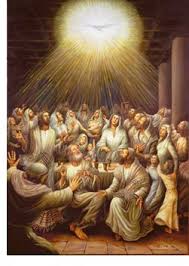
However, after His resurrection from the dead, He told His followers to take the Good News of eternal life through faith in Him out into the gentile world (Matthew 28:19). Then, fifty days after Passover, the Holy Spirit arrived in the Temple courtyard during the Feast of Pentecost. It was then that the Apostle Peter preached the resurrected Christ and three thousand Jews were publicly baptized in the name of Jesus. He was now seen by many of His followers as Divine or the literal Son of God. Others saw this as a sign that He was the Son of David and would soon return from wherever He went to defeat Rome and reign as King. Still others saw Him as a great rabbi who unfortunately met with an untimely death. In any case, He would ultimately establish a messianic reign in Judah that would be the envy of the world. And finally, many saw Him as a blasphemer. So now we see the start of four distinctly different camps of thought on who Jesus was. He was either the Divine immortal Son of God, or the genetic mortal son of David, or a great rabbi whose teachings were worthy commentary, or a common blasphemer who got what He deserved.
Initially, those who saw Jesus as the Messiah, or a returning king, or a great rabbi continued to worship in the Temple or synagogues on Saturday. Even the Apostles continued in this tradition. Everyone remained distinctly Jewish following the Mosaic laws, Temple traditions and dietary customs. However, trouble began to brew as gentiles began to believe in Jesus as the Divine Son of God. To make matters worse, they began showing up at the Temple and in synagogues to publicly pray to Him. We read of an early example of this in the Book of Acts chapter ten. A Roman centurion named Cornelius living in Caesarea, was told by an angel to invite the Apostle Peter to his house. Peter was then told in a vison it was now acceptable to eat un kosher food and enter the house of this gentile. He arrived at the home of Cornelius, preached Jesus crucified and was then amazed to see the Holy Spirt arrive and indwell the entire household. The movement of Jesus as Messiah was now officially open to the gentile world. Initially, the Church was referred to as The Way because Jesus taught that He was the way, the truth and the provider of eternal life. However, by the mid to late first century, the terms Christian and Christianity were in use (Acts 11:26). The earliest existing document citing the term "Christianity" dates to 100 A.D.
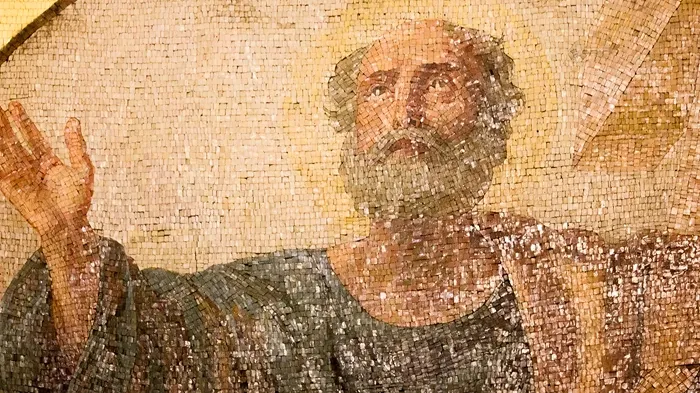
A few years after this event Paul, a persecutor of Christians, had a vision of Jesus, became an ardent follower and began a mission of taking the Gospel to the gentile world. He would eventually establish churches in Antioch as well as in Syria, Asia Minor {Turkey} and Greece (Acts 11:19-24; Galatians 2:11-14). Paul’s method was to go into a synagogue, introduce himself and immediately began to preach Jesus as the long awaited Messiah who would soon return. Thus, the founding members of a church were almost exclusively Jewish. If the Jewish religious leaders had a problem with his message, Paul would simply hold meetings in homes, outdoor settings or rented buildings. It was then that Paul would also preach the Gospel to the pagan gentiles. So, these two, once considered diverse populations, now began to coalesce around Jesus as the universal Savior of the world.
This was a major turning point in the Jesus as Messiah understanding. The Temple was forced to step in and try to control a movement that was quickly converting Jews into followers of Christ. In fact, this movement would create five million members by the end of the first century. The Jewish religious leaders initially attempted to turn Jesus into a great recruitment tool. They sent out groups of men known as Judaizers to speak at gatherings. They taught that, anyone who wanted to follow the great rabbi known as Jesus and pray in the Temple, would have to meet the following requirements. First, they would need to be schooled on Jewish history, laws, dietary restrictions and customs. They would then need to be circumcised and go through a ritual putrification ceremony. Only then would they be allowed to attend Sabbat or Saturday worship services. There they could think of Jesus as a great rabbi, healer, prophet or even a would be Messiah, but not the Son of God as that had been officially deemed as blasphemous.
As Jews and gentiles began attending Temple services in ever greater numbers, the need to first Judaize the gentiles was reexamined. It was determined that since only Jesus was able to fully keep the Mosaic Laws, why were His followers now being asked to try and keep them. To demand that imperfect people try to keep perfect laws was to deny the fundamental reason Jesus self sacrificed Himself. Therefore, the focus on Jewish law, customs and rituals quickly decreased, and the doctrine of faith in Jesus plus nothing else began to draw an even larger following. This major realization of Jesus as the one and only redeemer of mankind caused irreconcilable differences in every community. First, the Jewish monotheistic religion had to reject Jesus as the redeemer of mankind if it wanted to continue as a viable religion. Second, all the various pagan religions were also forced to reject this claim if they also wanted to remain viable. Their reasoning was simple, to agree with this assertion meant that their religion would now serve no purpose. You either support a doctrine that involves keeping various laws and customs that may earn eternal life. Or, you believe in a doctrine that its founder sacrificed Himself on behalf of His worshippers in order for them to receive eternal life. So, there is now no need for laws, and eternal life is guaranteed. For the Jewish and pagan religions it was law, failure, judgement and the possibility of an after life. For the followers of Jesus it was redemption, grace, mercy and guaranteed eternal life. While Christianity had its roots in Judaism, it was now fundamentally very different. This transition could be likened to the story of the small acorn verses the mighty oak tree. One originally relied on the other, but now the empty hollow shell had served it purpose and faded away. Meanwhile, the mighty living oak tree continued to grow and give shelter and comfort to all people who seek rest and peace from life’s storms.
Jewish followers of Jesus in Jerusalem, now had to decide if they wanted to continue to keep the ancient traditions of the Jewish faith which carried with it the burden of the Law. Or, did they prefer the guarantee of eternal life created by Christ crucified plus nothing else. For many years there were some who attended both services. They attended synagogue on Saturday out of respect for their family traditions. However, they also attended church on Sunday as it brought them the relief of knowing that Jesus made eternal life possible. But, as Church doctrine began to solidify around basic core beliefs, these two non reconcilable teachings forced parishioners to have to make a decision. Either Jesus was the Messiah who brought eternal life. Or, he was a false messiah and blasphemer. Thus, trying to be a law following Jew while accepting the free gift of salvation through Christ was like trying to mix the oil of Law with the water of Grace. The two cannot coexist.
Rome respected ancient religions and originally saw the Jesus movement as just another sect of the Jewish faith. However, the Jesus as Messiah movement had caused the Jewish church to fracture into four very different camps. Jesus was either the prophesied Jewish Messiah, a son of David, who would soon return and rule Judah. Or, Jesus was a respected rabbinical commentator. Or, Jesus was a common blasphemer. Or, Jesus had replaced Jewish law and customs with faith in Him plus nothing else. These diverse opinions would quickly reach a breaking point.
Rome was now becoming concerned about these divides. They were constantly having to control riots that were regularly breaking out in the Temple and synagogues. They were also concerned that the followers of Jesus saw Him as a King. This went against a foundational belief that held the Roman Empire together. There was only one King and it was Caesar. Any movement that supported a second king was to be immediately crushed. There would be no exceptions to this iron clad rule.

In 70 A.D. the Jews of Jerusalem rose up against pagan Roman rule. This rebellion caused Rome to send sixty thousand troop who sieged the city for 4 months, 3 weeks and 4 days. The city was then looted, burned and the majority of buildings were torn down to their foundations including the Temple complex. Over one million Jews were then crucified, and one hundred thousand were sold as slaves. Some Jews escaped to surrounding areas in the hope of returning to their homes once tempers calmed down, but most moved north and west into Europe. The Christians were allowed by Rome to return to their homes after the siege as they had evacuated themselves from Jerusalem as the Roman army approached the city. This lack of support was seen as a tremendous insult to the Jewish population and would not soon be forgotten.
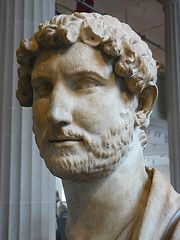
In 132 A.D. the Jews reorganized in Jerusalem and made one last fatal rebellion attempt against Rome. At that time they elected a man by the name of Simon Bar Kokhba to be their leader and crowned him as Messiah. This appalled the Christian population which again refused to help the Jews in this final and feudal revolt. The Christians once again left the city and the Jews were summarily defeated by Rome. The Jews never returned in mass to Israel and they never forgot that the Christian’s abandoned them repeatedly in their times of need. This created the final break between the Jews and Christians.
However, the returning Christians were now allowed by Rome to live wherever they wanted. Many chose to live adjacent to those sites where Jesus lived, taught, performed miracles or that involved His execution. This was a major help to Empress Helena when she visited the Holy Land in 324 A.D. in an effort to locate and preserve as many of these sites as possible. Please see related: How Sacred Sites Were Discovered”.
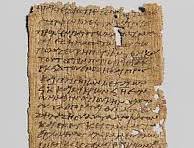
A Jewish/Christian Didache or document was created in c.85 A.D. and focused on the need for parishioners to love God and their neighbors. It also describes the observance of Jewish traditions alongside baptism and the recitation of the Lord’s Prayer. This document portrays Jesus as a charismatic prophet and refers to Him using the word pais. This is a word used to describe a servant or child (of God). This term was also used when referring to King David, and is not synonymous with the term “Son of God”.
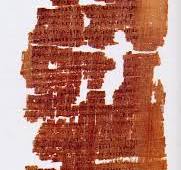
By contrast, the Epistle of Barnabas created forty years later (c.125 A.D.), now reveals a distinctly gentile Christianity in its understanding of the Hebrew Bible. It sees the Old Testament as shadow prophecies and allegories concerning Jesus as Messiah instead of simply historical facts. This document also clearly sees Jesus as Divine. Thus, the doctrinal line between Jewish Christians who saw Jesus as a human King and the Gentile Christians who saw Jesus as God's Divine Son had now been firmly established. With the disastrous outcome of the Second and final Jewish Revolt of 132 A.D., the Jews who saw Jesus as a rabbi, Scriptural commentator or blasphemer were now, by in large, driven out of Judah. In fact, the country's name was then officially changed by Rome to Palestine in honor of the Philistines once the Jewish nation's most hated enemy. Jewish and gentile Christians who thought of Jesus as a human yet Devine King now became the majority worshipers. The doctrine of Jesus as the Divine Son of God and part of a Triune Godhead, was now the foundational belief of the Universal Christian Church movement. The word 'Universal' in Greek/Latin is Catholic. It is now that we see the worldwide Jewish population forced to make one of only two choices. Jesus was a universal Devine Messiah worthy of praise. Or, Jesus was not the Messiah and they should return to their synagogues and continue keeping the law and traditions while waiting for the true Messiah, a male in the lineage of David, to appear.

On a closing note, the issue of Jesus as the Messiah is still one of many dozens of issues that divide modern Jewish doctrine. The Jews do not universally agree on any of the teachings of their religion other than; there is only one God, love your fellow man, show that love through works, and there will be a great resurrection of the dead at the end of the Age. The Jews also believe that, at that time, the entire population of the world both Jew and gentile, will physically experience a Messianic Age in which all of mankind will live together for a time in peace and harmony. Exactly who will participate, how long this age will last, or what happens at the end of this Age is not agreed upon in Jewish doctrine. Please see related: "Jewish Doctrine on Death"
Thanks be to God that we have Jesus who has given us reliable and detailed information concerning the Rapture, the coming Tribulation Period, the Rule of the Antichrist, His Second Coming, His Millennial Reign on earth, and the eternal unfolding plan of God for mankind which involves Ages, upon Ages, upon Ages...
If you enjoy the information provided on this site, please consider making a donation of any amount to help continue its production. Donate Now